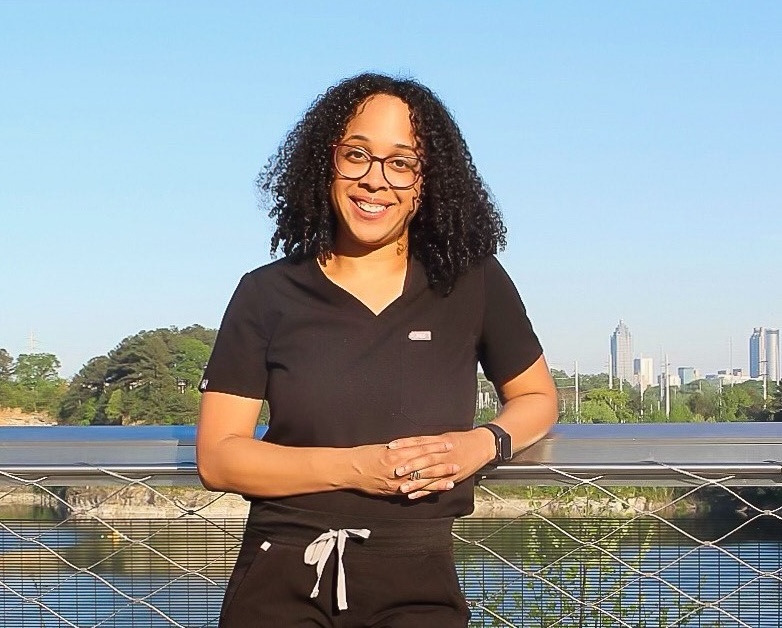When actress Olivia Munn, 43, posted on Instagram that she’d been diagnosed with an aggressive form of breast cancer, she not only received an outpouring of support, she used her celebrity status to raise awareness about the little known test that saved her life.
The year before, Munn was checking health tests off her list before heading to Germany to film a new sci-fi movie. She had her yearly mammogram and even had genetic testing for the BRCA mutation. Both tests came back clear. But when her doctor took the extra step of using the Breast Cancer Risk Assessment Tool (BCRAT), which asks a series of questions about family history and reproductive health, Munn’s risk was 37%. This was high enough for her doctor to recommend the MRI that detected her cancer.
Munn’s life plummeted into an unexpected nightmare and, instead of heading to Germany, she had four major surgeries in a 10-month period including a double mastectomy, a lymph node dissection, reconstructive surgery and a nipple delay procedure. In February 2024, she had her ovaries and uterus removed to keep the cancer from returning.
When Munn went public with her cancer journey, she credited her doctor’s use of the BCRAT for the early detection. “I’m lucky. We caught it with enough time that I had options. I want the same for any woman who might have to face this one day,” she posted on Instagram.
According to Mary Jane Minkin, M.D., a gynecologist at Yale New Haven Hospital and member of HealthyWomen’s Advisory Council, women should get a mammogram every year beginning at age 40. However, as was the case with Munn, getting a mammogram isn’t always enough.
“Mammograms miss 10 to 15% of cancers. They are not the be all and end all of breast health. This is where the Risk Assessment Tool comes in handy,” said Minkin, who explained that if you catch breast cancer early, as Munn did, the survival rate is very high.
How the Breast Cancer Risk Assessment Tool works
The BCRAT uses a woman’s personal information to estimate the risk of developing invasive breast cancer over the next five years and up to the age of 90. “It basically makes sure that people who are at a higher risk are getting tested regularly,” Minkin said.
According to the National Cancer Institute, the tool assesses:
- Age
- Age at your first period
- Age at your first live birth of a child
- Number of first-degree relatives with breast cancer
- Number of previous breast biopsies
- Presence of precancerous cells in the breast
“Being female is the biggest risk. The older we get, the higher the risk,” said Minkin. But there are many other factors to take into consideration. “If you were 9 or 10 when you started having periods, you’re at higher risk than somebody who started having periods at age 15,” she explains.
The amount of children you have and the age you have them can also contribute to your risk. Having children before the age of 35, and having multiple children, reduces your risk.
Genetics plays a role, too. The more first-degree relatives — your mother, daughters or sisters — who have been diagnosed with breast cancer, the higher your risk.
The more breast biopsies you’ve had, the more elevated your risk as well. Even if the biopsies are negative, the fact that they were needed suggests that there is something suspicious going on in the breast.
The BCRAT, which is available both online and at your healthcare provider’s office, tallies all your information and provides a risk assessment score. People with a score of over 20% should have yearly mammograms and breast MRIs beginning at age 30.
The BCRAT’s limitations
While the BCRAT can save lives, it does have limitations. The tool is not a replacement for genetic testing and cannot accurately detect risks for women carrying BRCA1 and BRCA2 mutations. It also can’t assess risk for women who have a previous history of breast cancer.
According to the Susan G. Komen Foundation, the tool measures group risk, not individual risk. This means that it provides the average risk of breast cancer for a group of women with similar risk factors, so it cannot predict if any individual woman will get breast cancer.
The BCRAT also doesn’t use all the established known risks for breast cancer, such as smoking, diet and obesity, which can limit its predictions.
The original model only used data collected from white women but can now estimate risk for Black women, Asian and Pacific Islander women, and Hispanic women. However, it may not accurately assess other racial and ethnic groups.
Know your options
If you use the online tool, discuss the results with your healthcare provider to make sure you’re reading it correctly. If you’re high risk, find an expert you trust who will advocate for you to get the appropriate testing and the care you need.
If you score high on the BCRAT, that doesn’t mean you need a mastectomy. “There are medications that can be used to lower risk and things that people can do on their own,” Minkin said. Cutting back on alcohol, getting regular exercise, maintaining a healthy weight and not smoking can all help. “No matter what your risk is, be aware of what you’ve got going on in your breasts.” If you see any changes, don’t ignore them.
This educational resource was created with support from Daiichi Sankyo and Merck.










![Healthy No-Bake Mint Chocolate Truffles [high protein + no added sugar]](https://healthyhelperkaila.com/wp-content/uploads/2024/08/IMG_1902-e1724891697681.png)







 English (US) ·
English (US) ·